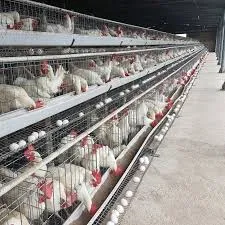evaporative cooling pads greenhouse
Sep . 25, 2024 15:17 Back to list
evaporative cooling pads greenhouse
The Importance of Evaporative Cooling Pads in Greenhouses
In the world of agriculture, specifically in greenhouse management, maintaining optimal temperature and humidity levels is critical for plant growth and health. One of the most efficient methods for achieving this is through the use of evaporative cooling pads. These pads not only contribute to the overall climate control within greenhouses but also enhance energy efficiency and reduce operational costs.
Understanding Evaporative Cooling
Evaporative cooling is a natural process whereby water absorbs heat from the surrounding air as it evaporates, thus lowering the air temperature. In greenhouse environments, this principle is harnessed by utilizing cooling pads, which are typically made from a cellulose material or synthetic fibers. These pads are strategically placed to allow air to pass through them, facilitating the evaporation of water while cooling the air that enters the greenhouse.
Benefits of Using Evaporative Cooling Pads
1. Temperature Regulation During hot weather, greenhouses can quickly become overheated, putting stress on plants. Evaporative cooling pads help regulate and maintain lower temperatures, ensuring that plants thrive even under intense sunlight. Maintaining a stable temperature is essential for optimizing photosynthesis and promoting healthy growth.
2. Humidity Control Evaporative cooling pads can also influence humidity levels within a greenhouse. By releasing moisture into the air as the water evaporates, these pads help maintain a suitable humidity range that is vital for plant health. This is particularly important for sensitive crops which require specific humidity levels to flourish.
3. Energy Efficiency Compared to mechanical air conditioning systems, evaporative cooling systems have significantly lower energy consumption. Since they rely on water evaporation rather than compressors and refrigerants, they offer a cost-effective alternative for temperature control. This saves greenhouse operators money on electricity bills while reducing the carbon footprint of agricultural operations.
evaporative cooling pads greenhouse

4. Improved Air Quality The use of evaporative cooling pads contributes to better air quality inside the greenhouse. They help filter contaminants and dust from the incoming air, leading to a healthier environment for both plants and workers. High-quality air circulation is essential not just for plant growth but also for preventing diseases caused by stagnant air.
5. Easy Installation and Maintenance Evaporative cooling pad systems are relatively easy to install and maintain. Once set up, they can operate effectively with minimal intervention. Routine cleaning and occasional water supply maintenance are typically all that is required, making them user-friendly for greenhouse managers.
Considerations for Implementation
While evaporative cooling pads are beneficial, several factors must be considered when implementing this system. The effectiveness of the cooling pads is influenced by the local climate, humidity levels, and the specific crops being grown. In drier climates, evaporative cooling can be incredibly effective, while in areas with high humidity, the cooling effect may be less pronounced.
Furthermore, it’s essential to ensure that the water supply used for the pads is clean and free of contaminants. Regular maintenance checks to prevent mold and algae growth on the pads will also ensure optimal performance and longevity.
Conclusion
In conclusion, utilizing evaporative cooling pads in greenhouses is a highly effective method for temperature and humidity management. The advantages of energy efficiency, improved air quality, and ease of maintenance make these systems an attractive choice for greenhouse operators looking to optimize their growing environments. By implementing evaporative cooling, greenhouse managers can better support their plants' health and productivity while minimizing their environmental impact. As the demand for sustainable agricultural practices continues to rise, evaporative cooling pads stand out as a practical solution for modern greenhouse operations.
-
Automatic Feeding Line System-Pan Feeder Nipple Drinker|Anping County Yize Metal Products Co., Ltd.
NewsJul.29,2025
-
Hot Sale 24 & 18 Door Rabbit Cages - Premium Breeding Solutions
NewsJul.25,2025
-
Automatic Feeding Line System Pan Feeder Nipple Drinker - Anping County Yize Metal Products Co., Ltd.
NewsJul.21,2025
-
Automatic Feeding Line System Pan Feeder Nipple Drinker - Anping County Yize Metal Products Co., Ltd.
NewsJul.21,2025
-
Automatic Feeding Line System - Anping Yize | Precision & Nipple
NewsJul.21,2025
-
Automatic Feeding Line System - Anping Yize | Precision & Nipple
NewsJul.21,2025






